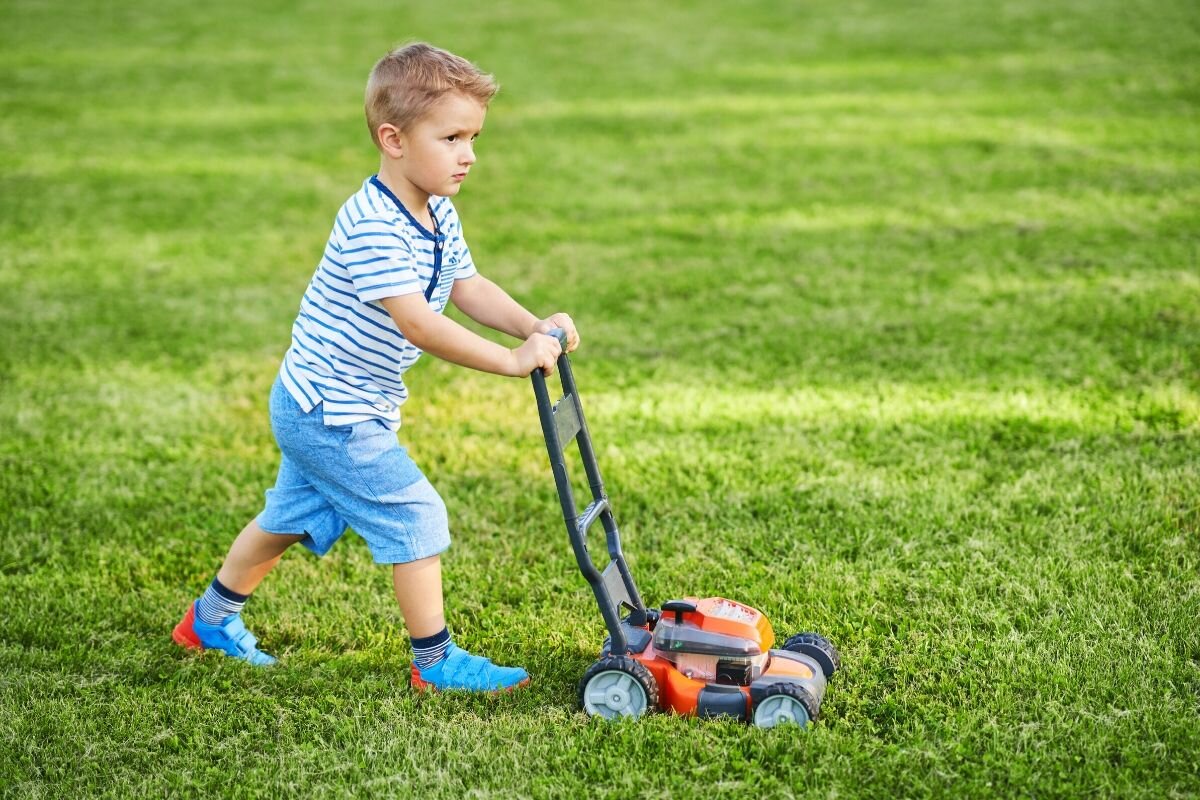The advent of childhood responsibility often intertwines with the performance of household chores, among which mowing the lawn stands as a quintessential task. As often seen in family dynamics, parents may deliberate on the appropriate moment to entrust this responsibility to their offspring. Determining the age at which children can mow the lawn independently not only hinges on their physical capabilities but also encompasses considerations of safety, maturity, and skill development.
Understanding the nuances of children’s readiness for such tasks requires a multi-faceted exploration into the physical, psychological, and developmental domains that influence their ability to engage in lawn mowing competently and safely.
As children traverse the journey from early childhood into their adolescent years, various factors come into play that informs the decision for them to begin this chore. In this discussion, we will delve into these aspects, surveying the typical development milestones, assessing safety guidelines, and evaluating the broader implications of children undertaking outdoor responsibilities.
Physical Capabilities and Developmental Milestones
Physical growth and motor skill development are foundational to a child’s capability to manage the operation of a lawn mower. Generally, children reach a level of physicality suitable for such tasks between the ages of 10 and 12. By this stage, they possess sufficient upper body strength, coordination, and balance essential to maneuver equipment effectively.
Moreover, fine motor skills, which are imperative in controlling machinery, play a vital role. As children refine their dexterity, they can learn to manipulate the controls of a lawn mower. However, while some may exhibit precocious abilities in handling lighter, more manageable equipment earlier, it is critical to assess each child’s unique developmental trajectory rather than adhere strictly to generalized age norms.
For instance, certain younger children may display an affinity for physical activities or possess larger body frames that might enable them to handle responsibilities earlier than others. Hence, parental evaluation is key, assessing not only the child’s age but also their strength, coordination, and comfort level with machinery.
Understanding Safety Guidelines
The paramount concern when allowing children to mow the lawn is safety. The U.S. Consumer Product Safety Commission (CPSC) reports numerous injuries annually related to lawn mowers, highlighting the necessity for stringent safety protocols. The risk associated with lawn mowing necessitates comprehensive education and supervision when children engage in this task.
Before permitting a child to mow alone, parents should ensure they have a thorough understanding of safety guidelines associated with the operation of lawn mowers. Comprehensive instruction on the dangers inherent to lawn mowing equipment, including sharp blades, and how to mitigate these risks is critical. Children should be taught to wear appropriate clothing, including closed-toe shoes, and, where necessary, protective eyewear to shield themselves from flying debris.
Furthermore, the type of mower plays an integral role. Push lawn mowers, which require active physical engagement from the operator, are often more appropriate for older children compared to riding mowers, which necessitate a higher level of maturity and understanding of machinery operation. Parents must also consider the terrain the child will be mowing. Uneven or hilly ground can present significant hazards, thereby necessitating caution in allowing younger children to operate mowers in such contexts.
Developing Sense of Responsibility
Assigning a household task like mowing the lawn can significantly impact a child’s development, fostering a sense of responsibility and independence. As children take ownership of such chores, they cultivate essential life skills, such as time management and the ability to adhere to a routine. This not only instills discipline but also contributes to their self-esteem as they witness the fruits of their labor manifest in the form of a well-maintained yard.
Moreover, engaging in such responsibilities can serve as a stepping stone toward understanding the value of teamwork and family contribution. Mowing the lawn alongside a parent can evolve into a bonding experience, fostering communication and shared goals. As children grow older and exhibit greater competence, this experience can transition into offering help to neighbors or participating in community service, thus broadening their worldview and civic responsibility.
Additionally, instilling an appreciation for outdoor chores can foster a lifelong connection to the environment. Encouraging children to respect green spaces and understand the effort that goes into maintaining them can nurture a sense of stewardship and environmental consciousness, which is increasingly vital in today’s ecological landscape.
Conclusion: A Holistic Approach
Ultimately, the decision of when a child can start mowing the lawn independently cannot be framed singularly around age. A holistic approach encompassing physical capabilities, safety guidelines, and the cultivation of responsibility presents a more comprehensive understanding of this milestone. The journey into independence through tasks such as lawn mowing is not merely a rite of passage but a pedagogical opportunity that shapes their development.
By fostering a safe and encouraging environment, parents can guide their children toward responsible outdoor management, reaping not only the practical benefits of a manicured lawn but also nurturing essential life skills that extend far beyond the garden. In cultivating this sense of responsibility, children emerge with a greater appreciation of their role within the family and community, ultimately preparing them for the intricate demands of adult life.









Leave a Comment